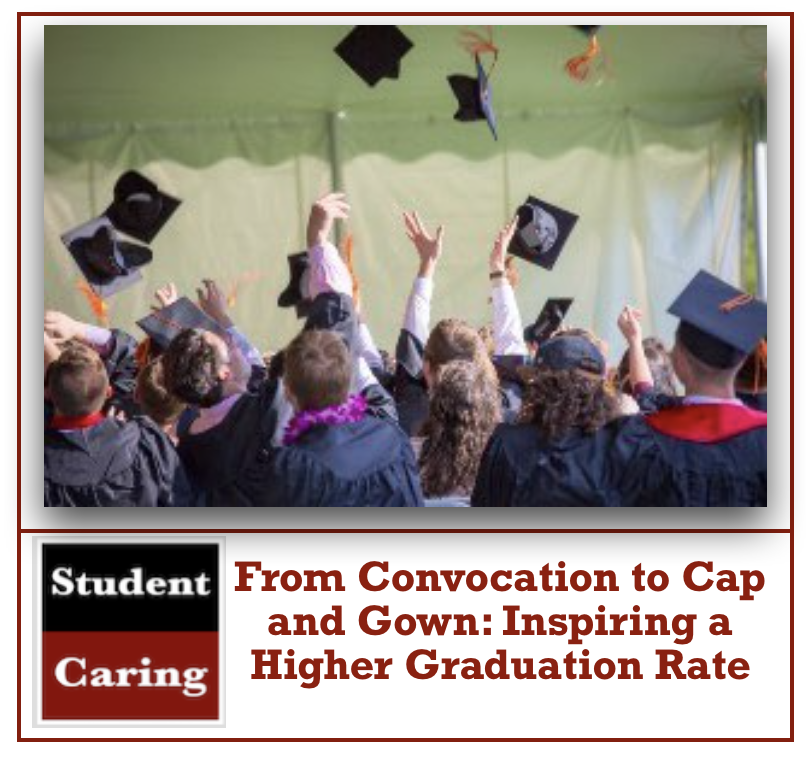
College graduation rates are dropping at schools across the nation. Among other factors, grad rates are affected by the rising cost of higher education and the necessity for students to have multiple jobs – which cut into their study time and cause them to see college as not worth the cost.
How can colleges and universities increase graduation rates? Most of the solution to the puzzle lies in providing solid support for students. This includes supporting them academically, connecting them to resources and demonstrating the value of their degrees. Want to see your grad rates rise and your students succeed? These tips will help any institution encourage more students to turn their tassel to the left.
1. Start Strong
To improve student engagement, begin before orientation. Colleges need to attract the best prospective students by accurately advertising the unique benefits of their programs. They need to plan a meaningful introduction to college life that provides students with the essentials they’ll need to succeed.
A solid orientation can last anywhere from one day to a full week. However, to grow graduation rates, institutions may wish to implement a longer orientation period to allow students to meet with professors, locate services and start to feel at home.
2. Enhance Advising Services
Students often express frustration during their junior and senior years as they scramble to fulfill classes and credits for graduation requirements. Other students find out incorrect course placement could derail their plans to walk at semester’s end. Many drop out in frustration or because they can’t afford another semester.
Increasing the amount of required contact between advisory services and students can prevent these mishaps. This may entail hiring additional staff to ensure an adequate student-to-advisor ratio. Students who understand exactly which courses they must take to earn their degrees – and when – are more likely to stay the course.
3. Implement Logistical Adjustments
Problems navigating difficult scheduling realities also impact graduation rates. As of 2013, nearly 10 percent of those in the workforce held down more than one job. Coupled with confusing class schedules, balancing school and work proves problematic.
School officials can take care to improve scheduling by running required classes close together. This makes it easier for students who also work to manage both their studies and their paycheck.
4. Focus on Motivation and Inspiration
The price tag for higher education continues to rise – which may cause some students to call it quits. But those who earn a university degree still make more than their less-educated peers by as much as $1 million.
University officials should reinforce the value of a degree. This helps those thinking about dropping out to realize the payoff from their investment.
In addition, your institution should strive to keep students positive and driven. Did you know more than 25% of enrolled college students are struggling with their mental health? Providing motivational and inspirational resources – like guest speakers, student fairs or uplifting campus newsletters – can help students connect college to the bigger picture and feel motivated to continue.
5. Encourage Diversity
A recent study found that teams who embrace diversity increase their productivity by 19 percent. In the collegiate setting, this improves graduation rates. Students of diverse backgrounds have different ways of looking at the world and can help peers overcome obstacles creatively.
6. Offer Experiential Learning
Experiential or hands-on learning helps students see the real-world applications of their studies. It can also provide a foot in the door for a future job opportunity, something that encourages would-be grads to complete their degrees. Fill your campus calendar with diverse events and activities to keep students interested – and give them a broader education than their coursework does alone.
Increasing Graduation Rates
To address faltering graduation rates, universities must first address the factors leading students to drop out. With both ingenuity and genuine caring, we can make sure we see more of our students walk across the stage.
About the Author
Alyssa Abel is an education blogger with a special focus on study skills and student life. Covering a range of school-centric topics from college and career prep to studying abroad, she hopes to open eyes to the gift of a good education. Follow updates on her blog, Syllabusy.

0 Comments